
How To Cook With Wild Garlic
How To Forage Wild Garlic
Mark Birchall, Chef Patron At Moor Hall
Set in a stunning Grade II-listed building with its own gardens and surrounding estate, Moor Hall is a three Michelin-starred restaurant known for produce-driven dishes rooted in the local landscape.
“We use every part of the plant,” says Mark. “The young shoots are great raw – light and fresh. Larger leaves go into a punchy salsa verde with pickled lemon, and once it flowers, we harvest the white blooms for garnish. Post-flower, we pickle the little buds – like capers – to finish sauces year-round. Nothing’s wasted.”
When it comes to foraging, Mark’s approach is rooted in sustainability: “We forage locally, away from footpaths, to find untouched growth. Always avoid uprooting and only pick from abundant areas. It’s all about balance and respect for the land.”
Oliver Gladwin, Chef & Forager At Nutbourne, The Shed & The Pig’s Ear
As well as running restaurants, Oliver and his brothers run Nutbourne Farm and Vineyard, where wild garlic grows in abundance. They’re even distilling wild garlic vodka for Bloody Marys at their Chelsea pub, The Pig’s Ear.
“As with all foraging, head slightly off the beaten track. You’ll find cleaner, less-crumpled leaves in the middle of patches. The smaller leaves are fresher and more flavourful – and definitely avoid pulling up the roots. Leave the flowers for the bees.”
Hesper Bulmer, Executive Chef & Founder Of Salsa Rose
A bold, female-led outdoor catering company, Salsa Rose is all about fire-cooked feasts and vibrant, seasonal menus.
“Wild garlic peaks in March but you can find it from February through April. It thrives in shady woodland near water and has a strong, unmistakable smell. Just make sure you don’t confuse it with lily of the valley – which looks similar but is toxic. Hemlock is another one to watch for.
Always pick leaves, never roots. Harvest sparingly to let plants regenerate. A damp tea towel in the fridge will keep it fresh, and we love it both raw and cooked – raw for punch, cooked for softness.”
How To Cook With It
Vanessa Marx, Head Chef At Bingham Riverhouse, Richmond
Hidden in the leafy banks of the Thames, Bingham Riverhouse serves up elegant, seasonal British fare.
“The return of wild garlic is a sure sign that spring has arrived. It’s so abundant, versatile, and best of all, free. I chuck bags in the freezer and add handfuls to pasta or risotto. Blended with olive oil, it makes a vivid pesto or salsa verde. It brightens up everything it touches.”
Usman Haider, Head Chef At Angelina, Dalston
This Italian-Japanese fusion restaurant is all about creative crossover cooking – and wild garlic fits right in.
“Wild garlic is a beautiful seasonal highlight. Its milder flavour means it’s more flexible than traditional garlic – perfect in pasta dishes or even blended into pasta dough itself. It also works in light, delicate sauces, which we love playing with in our fusion dishes.”
Hesper Bulmer
“We like it blanched and blitzed into butters, purees, or soups. Or wilted into a casserole like spring greens. For a fiery finish, scatter raw leaves just before serving. You can preserve it, but honestly, we love eating it fresh. When you forage it yourself, it just tastes better.”
Jacob Rowley, Head Chef At Casa Cruz, Notting Hill
A glamorous neighbourhood favourite, Casa Cruz is known for its elegant, produce-led cooking – and wild garlic is a highlight on its spring menu.
“If using it for pesto or sauces, blanching it quickly in boiling water before chilling in ice water helps to mellow its strong flavour. Wild garlic flowers also make a great addition to salads."
“It’s a fantastic ingredient to cook with – use it as you would spinach for a fragrant twist. If you're considering replanting it in your garden, be mindful, as it spreads rapidly.”
Inspired? 5 Wild Garlic Recipes To Try…
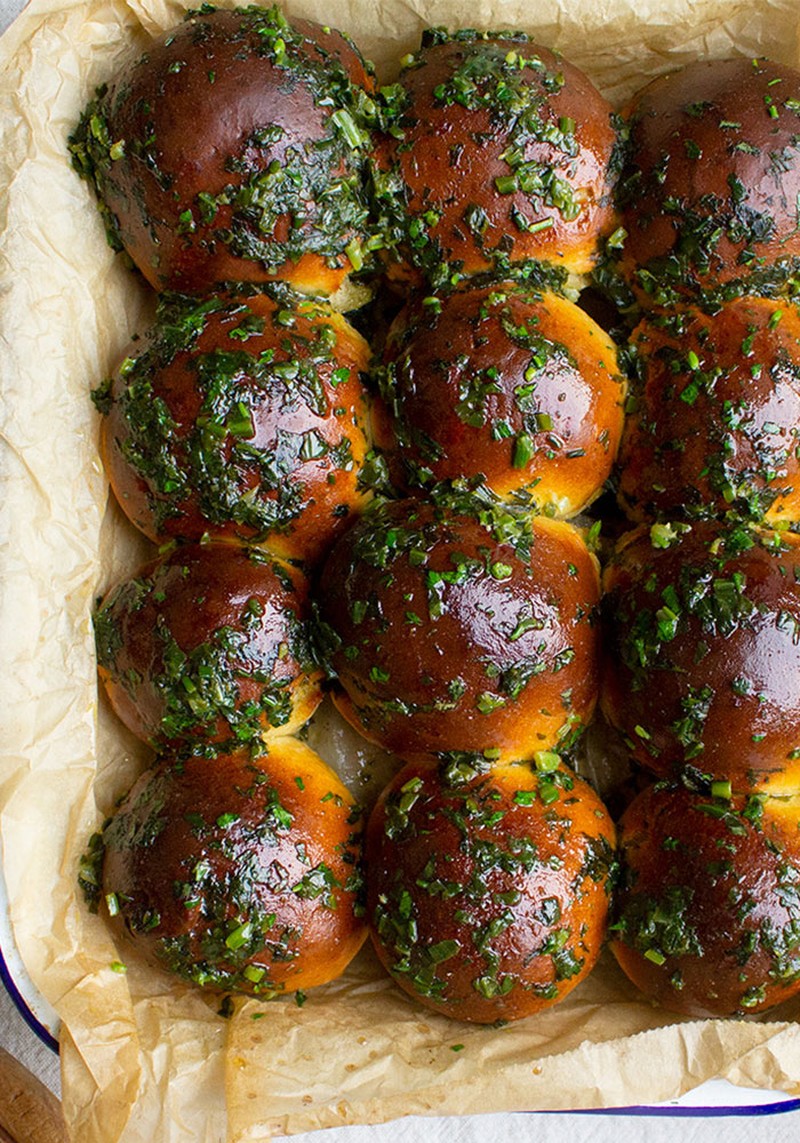
Cheesy Wild Garlic Dough Balls
Is there a better companion to pizza than warm, cheesy dough balls? These light, fluffy bites are enriched with parmesan, filled with molten mozzarella and finished with a luxurious wild garlic butter.
Mix flour, yeast, sugar, salt and Parmesan in a bowl. Warm the milk and stir in the oil. Pour into the flour mix and knead for 10-15 minutes until you get a springy, smooth dough. Leave to prove in a warm spot for 1½-2 hours until doubled in size.
Divide the dough into small balls. Stuff each with a chunk of bocconcini and seal shut. Prove for 30 minutes.
Bake at 220°C for 20-30 minutes or until golden brown.
Melt butter with wild garlic and season to taste. Pour over hot dough balls and serve immediately.
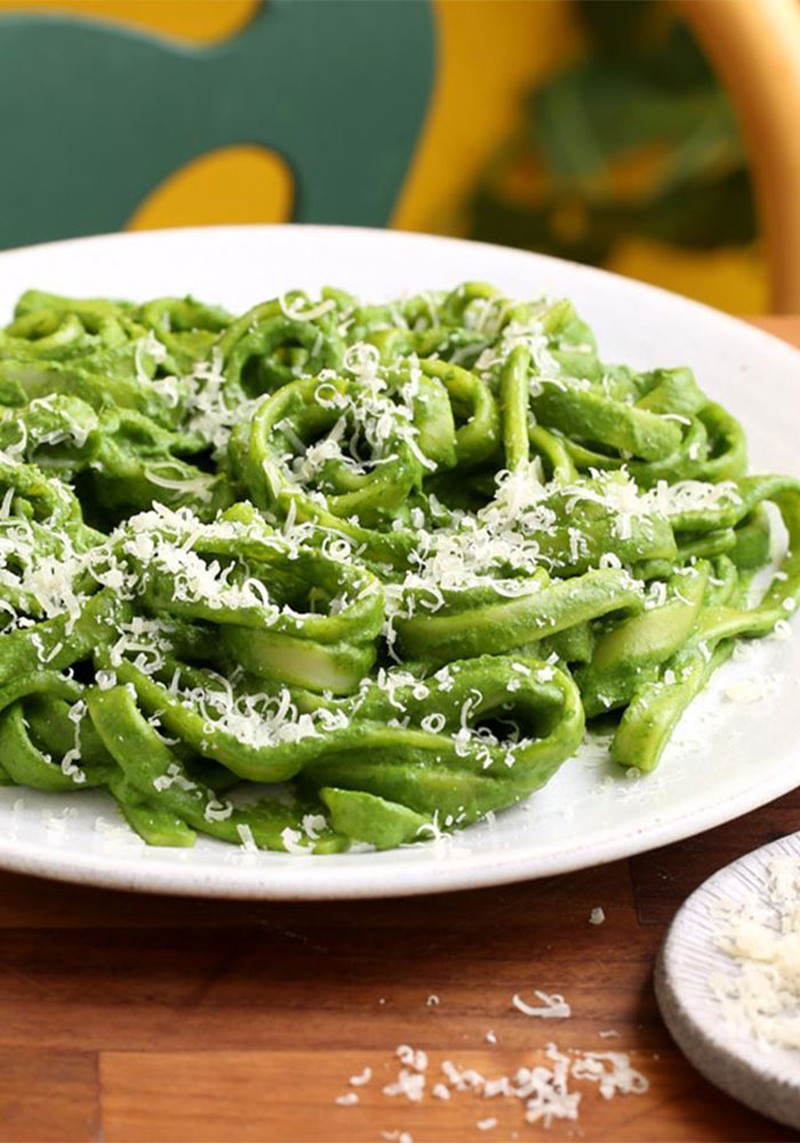
Wild Garlic, Spring Greens & Ricotta Tagliatelle
Combine two delicious spring vegetables and turn them into a rich and creamy green sauce for pasta. It's easy to make. Simply whizz wild garlic and spring greens with ricotta, veggie Parmesan, lemon juice and olive oil. Then toss with cooked tagliatelle.
Roughly chop the spring greens and wild garlic. Blanch in boiling salted water for a few minutes, then drain and plunge into a bowl of ice-cold water.
Bring a fresh pan of salted water to the boil. Add the pasta and cook according to the pack instructions.
Squeeze excess water from the greens and place in a food processor. Add the ricotta, Italian hard cheese, lemon juice, olive oil and 150ml of pasta cooking water. Blitz until you have a bright green sauce.
Drain the pasta and toss with the sauce. Serve with extra cheese and a twist of black pepper.
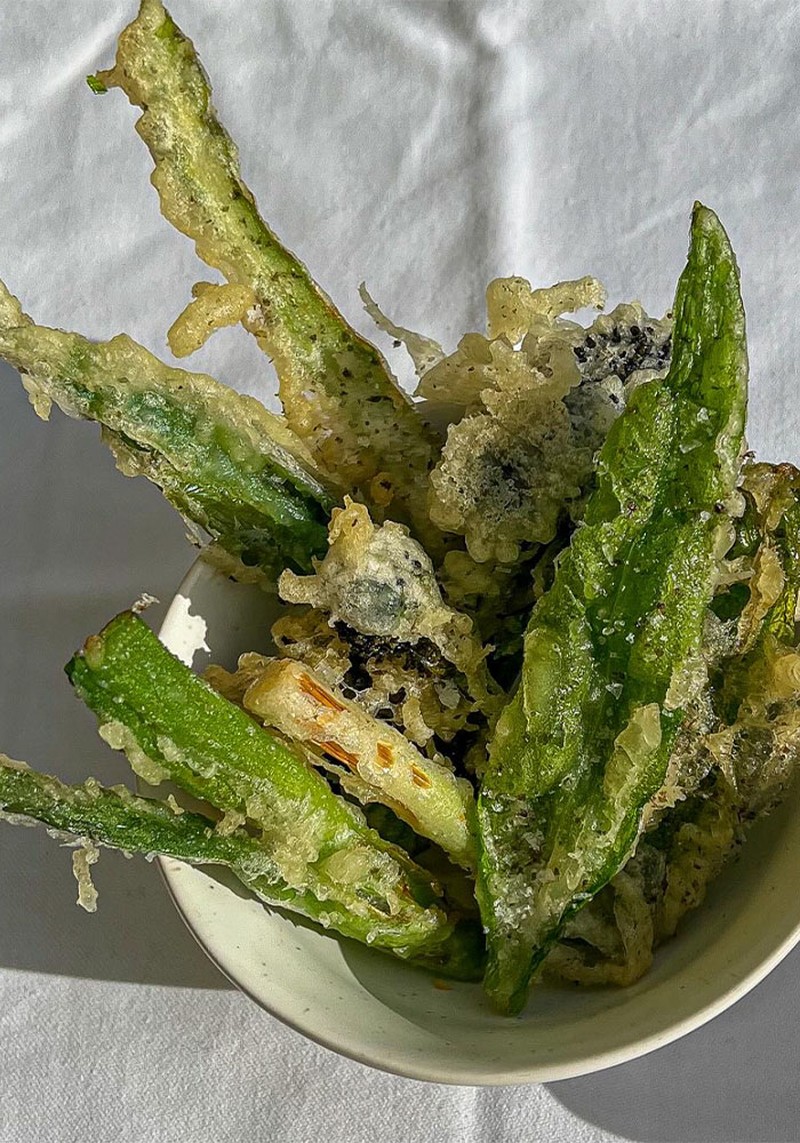
Spring Vegetable Tempura With Wild Garlic
Light and crisp, this tempura is a cracking way to make the most of spring’s tender greens, shoots and leaves. Foraged gems like wild garlic and nettles are spot on, along with spring onions and asparagus. Bigger veg? Slice them thin – tempura only needs a minute or two in hot oil. The trick to that airy crunch? Ice-cold sparkling water, a light touch with the batter, and straight into the fryer. Sprinkle with seaweed salt and serve with a sesame dip – or try ponzu or wild garlic mayo for a tasty twist.
In a large bowl mix together all the ingredients for the yoghurt flatbreads until it just comes together. Make into about 250g balls and squish out with your hands until they roughly fill the base of a medium-sized frying pan. Add 1 tablespoon of olive oil to a hot pan and gently fry for 8-10 minutes on each side.
Pull the lamb apart and add to a frying pan along with the olive oil and rosemary sprigs. Fry until the edges start to go crispy and caramelised.
Meanwhile add the wild garlic, olive oil, salt and 50g of yoghurt to a blender and blitz until smooth. Mix through the remaining yoghurt and put in a dish to serve.
Serve in the middle of the table ready for everyone to tuck in and share.
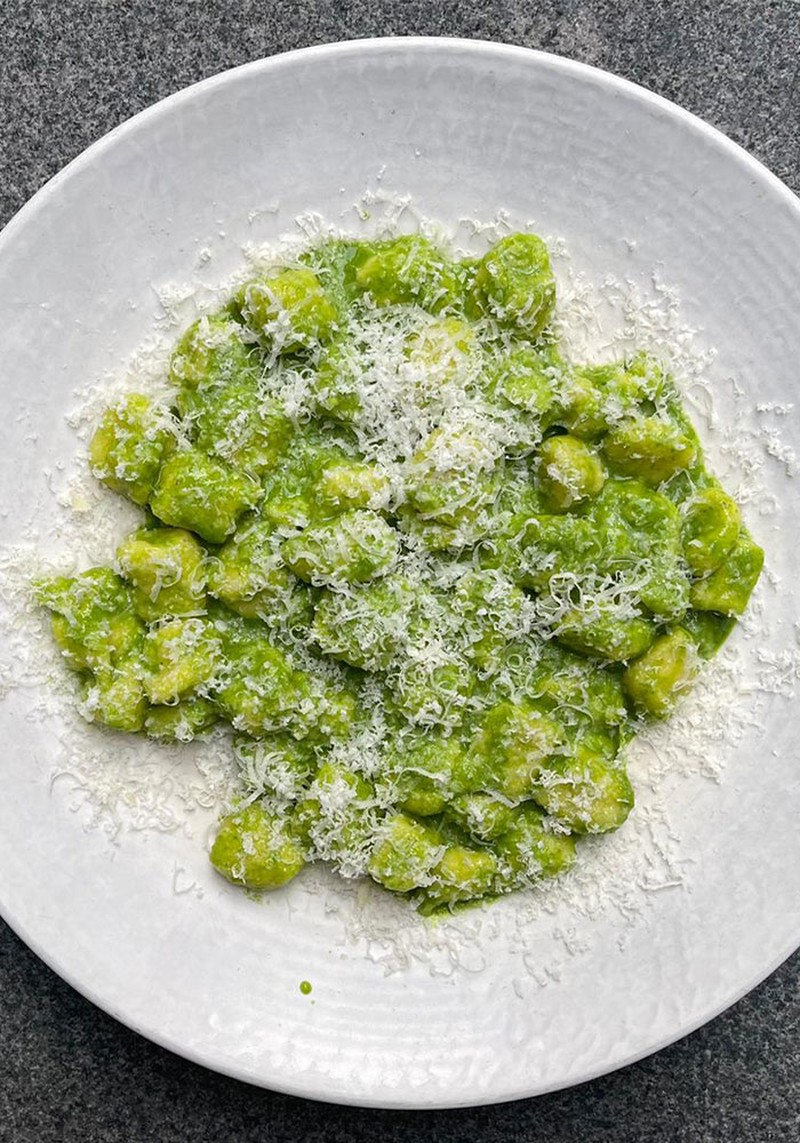
Wild Garlic Pesto Gnocchi
Wild garlic is in season throughout spring, carpeting UK woodlands with its unmistakable fresh, garlicky scent. It makes a fantastic pesto – just don’t over-blitz or the flavour can turn overpowering.
Roast the potatoes whole until soft. Halve and scoop the flesh into a bowl. Mash with a fork, then fold in the flour, eggs, nutmeg, salt and pepper. Lightly knead into a dough. Roll into ropes and cut into gnocchi pieces. Rest on a floured tray.
Blanch three-quarters of the wild garlic. Blitz with hazelnuts, oil and cheese. Season with salt and pepper.
Cook the gnocchi in boiling salted water until they float. Toss with pesto and a splash of pasta water. Serve with extra cheese.
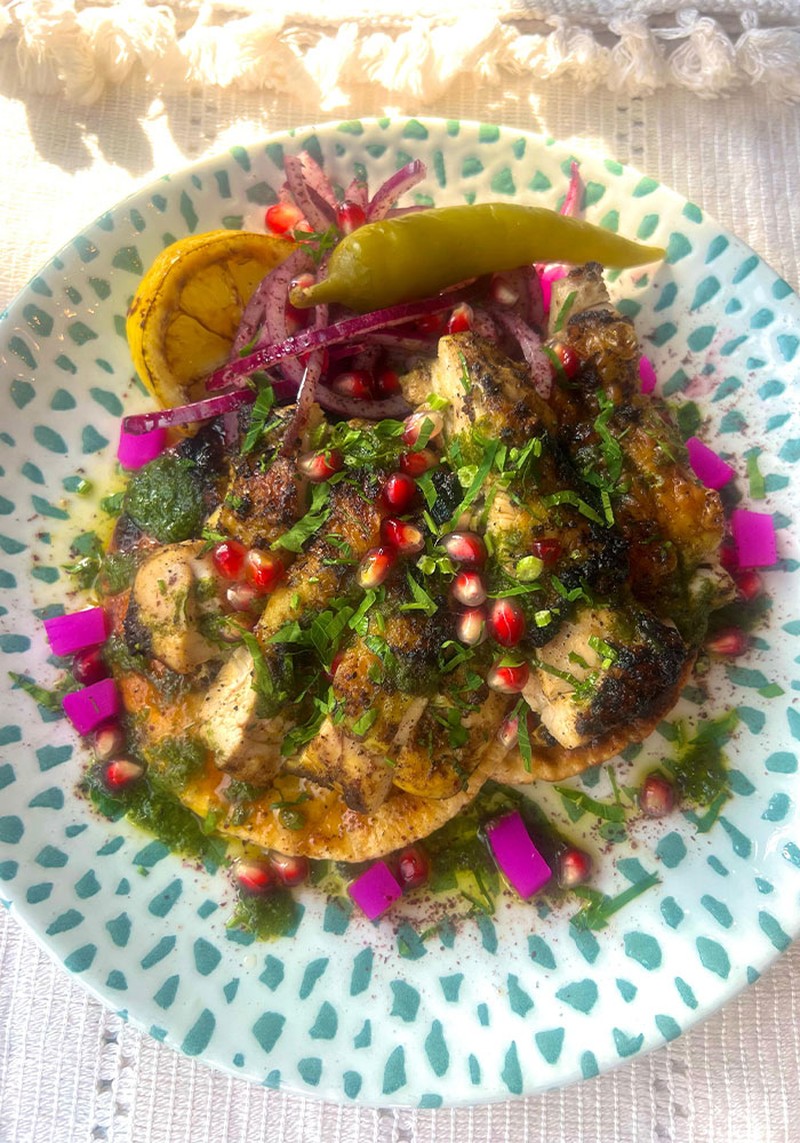
Wild Garlic & Lemon Chicken Shawarma
Shawarma is a beloved Lebanese street food, and adding wild garlic and lemon to the marinade gives this dish an unexpected, aromatic twist.
To make the toum, blend the wild garlic, garlic and 100ml of oil until smooth. Add the lemon juice, ice and salt. Blend again, slowly adding the remaining oil until it emulsifies into a bright green sauce.
Mix the toum with the rest of the marinade ingredients. Coat the chicken and leave to marinate for at least 2 hours.
Roast in a hot oven (180-190°C) for 20-25 minutes or pan-fry until golden and cooked through.
Serve on charred pitta with pickled chilli, toum, parsley and pomegranate seeds.
*To blanche wild garlic, boil for 30-60 seconds, then plunge into iced water and drain well.
DISCLAIMER: We endeavour to always credit the correct original source of every image we use. If you think a credit may be incorrect, please contact us at info@sheerluxe.com.

